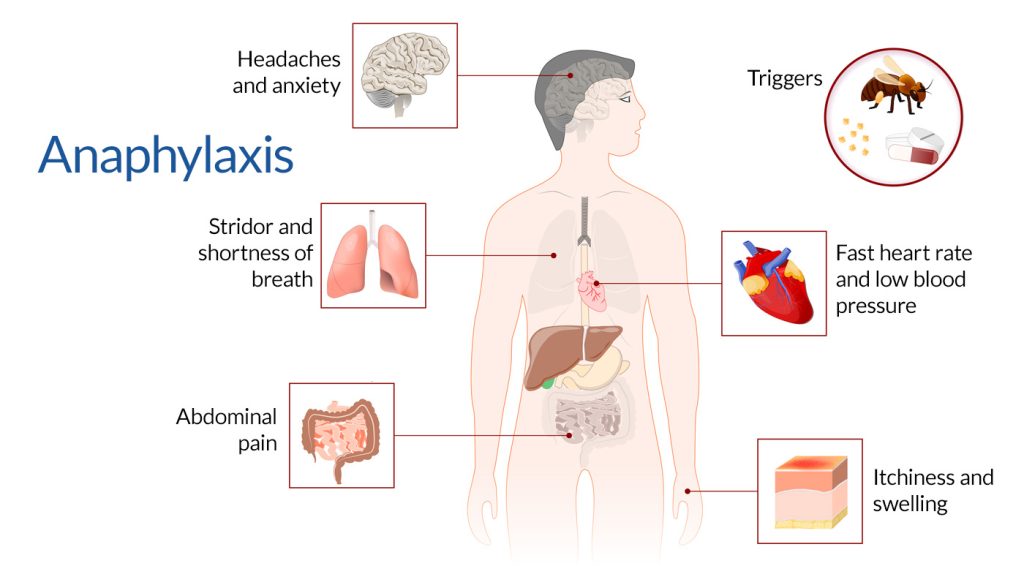What to Do When Anaphylactic Shock Strikes: Symptoms and Immediate Treatments

Anaphylactic shock is a severe and potentially life-threatening reaction that requires immediate medical attention. At Snap Medical, we are dedicated to providing you with the necessary tools and information to manage such emergencies effectively. This blog will discuss the most common symptoms of anaphylactic shock and outline the critical steps for anaphylactic shock symptoms and treatment.
Recognizing the Most Common Symptoms of Anaphylactic Shock
Identifying the onset of an anaphylactic shock quickly is vital to effective treatment. The most common symptoms of anaphylactic shock can include, but are not limited to:
- Severe breathing difficulties
- Rapid swelling of the throat and face
- Hives and intense itching
- A sudden drop in blood pressure, leading to dizziness or fainting.
Awareness of these symptoms, as part of your knowledge on anaphylaxis symptoms and treatment, can be the difference between a controlled medical response and a critical emergency.
Immediate Actions for Anaphylactic Shock Symptoms and Treatment
When you recognize the signs of anaphylactic shock, there are specific steps you should take at once:
- Administer Epinephrine: Do not hesitate to use epinephrine if you suspect anaphylactic shock. It’s the first and most crucial step in anaphylaxis treatment protocols.
- Call Emergency Services: After administering the first dose of epinephrine, call emergency services right away. If you have someone else available to call 911 while you are providing treatment, have them do so immediately. Inform EMS that there is an anaphylactic shock emergency.
- Keep the Person Calm and Lying Down: While waiting for medical help, keep the person calm and lying down; elevate their legs, if possible, to help support blood flow. As a provider of medical care, the clinician should also stay calm as you know you are prepared for emergencies!
Detailed Look at Anaphylaxis Symptoms and Treatment
In addition to the immediate treatments mentioned, understanding the full spectrum of anaphylaxis symptoms and treatment is crucial. This includes:
- Continuous Monitoring: After the initial administration of epinephrine, continuous monitoring is essential to watch for recurrent symptoms, as anaphylaxis can often have a second wave.
- Avoid Any Known Allergens: Part of ongoing anaphylaxis symptoms and treatment is to avoid further exposure to the triggering allergen.
- Prepare for Future Episodes: Be sure your epinephrine supplies are in date and readily available. On future visits, equip your patient f and their family with the knowledge and tools, such as extra epinephrine injectors or pens to manage future incidents.
- Education and Awareness: Key to Managing Anaphylaxis Symptoms and Treatment
Education is a critical part of managing anaphylaxis. Knowing the most common symptoms of anaphylactic shock and the proper responses can save lives. It is essential for health care practices to be familiar with anaphylaxis symptoms and treatment strategies. Regularly reviewing these procedures ensures everyone is prepared to act quickly and effectively.
Anaphylactic shock is a medical emergency that demands an immediate and efficient response. Recognizing the most common symptoms of anaphylactic shock and understanding how to administer the correct dose of epinephrine will make a significant difference in outcomes. At Snap Medical, we provide resources and supplies, such as Epinephrine Convenience Kits, to ensure you are always prepared. Stay safe and remember that knowledge and preparation are your best defenses against anaphylactic shock.
For your free Signs and Symptoms of Anaphylaxis cards for your office or EMS team, contact us at info@snapmedicalindustries.com.
For an in-depth anaphylaxis training, see our Anaphylaxis Training available on our website https://snapmedicalindustries.com
